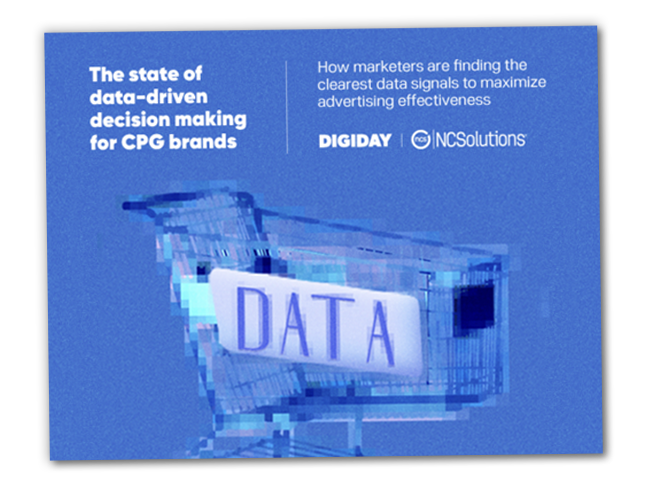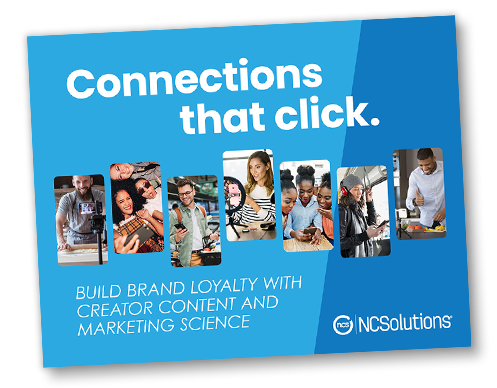Menu

By Leslie Wood, Chief Research Officer
If you Google “rules of advertising,” you’ll find that most of these golden rules focus on how to develop great creative. There isn’t a lot of data-driven direction for planning and delivering advertisements with the right messages to the right audiences. In the past, we didn’t have the tools and framework to understand the financial implications of messaging and targeting decisions. Today, we do.
Now, we can stop asking the following questions and start answering them.
- Does advertising really work or can I just cut the price?
- What are the best short- and long-term strategies for driving growth?
- Who should we target—current buyers or non-buyers?
- What are the roles of creative and media in driving brand growth?
- How should the life stage of my brand affect decisions?
Over the past year, NCS led a major research study, How to Build Brands, that included Nielsen, The Ehrenberg-Bass Institute (EBI) and a consortium of CPG advertisers, media companies and industry organizations. At the center of the analysis is 3.5 years of actual retail purchase data for 50 brands that represent a range of CPG categories at different life stages. In addition, it includes advertising spend, pricing and promotional data, ad exposures and the resulting sales outcomes for those exposed to the advertising.
This research puts together the pieces of how media and creative decisions contribute to brand growth over time. Here is a preview into what we’ve learned so far:
#1: Advertising Really Does Work!
Brands need to be nurtured with advertising, from launch to maturity and decline. This is true for new brands, growing brands, stable brands and declining brands, across all CPG categories.
New brand introductions require longer advertising support than they typically receive. Out of the ten new brands studied, all successful new brands with more than one year of sales showed the same pattern—declining advertising accompanying declining sales. The one exception that confirms the rule, a new brand that showed consistent advertising had consistent growth when the ad support is maintained.
#2: Promotion Won’t Sustain Sales without Advertising
In-store promotion and price promotion don’t negate the need for advertising. When advertising declined—sales declined. Continuous promotion alone was not enough to sustain the sales. Yes, advertising does work!
#3: There is a Positive Relationship between Share of Voice (SOV) and Share of Market (SOM)
While this is considered a well-known principle of marketing, this body of work confirms that it’s true. The data indicated that when the share of voice was strong, the share of market was also strong, with very little lag on the sales response.
#4: First-Time Buyers are Key to Unlocking Future Sales
Understanding first-time buyers can help determine who to target for future success. New brand buyers have very different future brand buying rates, resulting in a wide range of value to brands. The pattern of repeat purchasing can help determine who to target for future sales.
#5: Know Who’s Buying Your Brand and If it has Changed Over Time
Each brand has unique patterns of buyers—known as a Brand Signature—which shows the composition of audience segments based on how consumers purchase the brand and category over time. Over 85% of brands studied matched one of the following brand signatures:

Variety
The category may be planned, but the specific choice is unplanned. Typically, there is a large number of brands in the consideration set, like cookies or candy.
Standard
Shoppers buy the same product at the same interval, like dog food.
Dominant
Well-known brands with high loyalty and heavy category buying.
Brand signatures remain consistent over time, regardless of a brand’s life stage. Understanding a brand signature is important in developing the right advertising strategy. Targeting consumers for a brand with very high loyalty should be different than for variety buyers. What is your brand’s signature?
#6: Creative Really Matters
We know from other NCS research that creative is responsible for driving over half of the sales impact of advertising. The scope of our work doesn’t delve into what makes good or bad creative, rather it shows when creative is resonating with core target segments and when it is not. The messaging needs to communicate a unique selling proposition in a compelling way. If the message isn’t communicating something new, or talking about the brand in a new way, you won’t likely gain new buyers.
Marketers need to know not only if their creative works, but whether it is resonating with core or emerging audience segments.
#7: Target the Consumers Who are Responding to the Message
Who are the right consumers to reach with advertising? We’re all looking for a simple answer that says to grow your brand, advertise to buyers to get the highest return on ad spend (ROAS)—or non-buyers to drive penetration. But the answer is more nuanced and really depends on many factors, including your brand strategy, brand characteristics and with who your creative message is resonating.
Marketers typically develop the creative with the strategic target in mind. In practice, the data shows that there is often a misalignment of the creative and the media targeting, resulting in sales that are not optimized. We suggest an alternative. In the short term, marketers can target consumers who are responding to the creative—at least until it can be adjusted to appeal to the desired audience segments.
Since developing new creative can take a long time to produce, an advertiser could also run copy that they know was effective in the past, until the new campaign is ready. This cycle of testing creative in-market helps ensure that the message is aligned with the desired audience segments, optimizing sales growth.
Everything we’ve learned boils down to this:
Advertising to consumers who don’t respond wastes your media dollars. Advertising to the right consumers with a message that resonates drives sales and growth.
Find out how knowing your Brand Signature can help inform who you should target.
Subscribe for Updates
GET INSIDE THE MINDS OF CPG BRAND MARKETERS
Learn about their data-fueled strategies
SNAG YOUR COPY OF THE REPORT TODAY
WONDERING HOW CONSUMERS RESPOND TO INFLUENCER MARKETING?
See how creating content drives results
DOWNLOAD YOUR COPY NOW
WANT TO KNOW MORE ABOUT HEALTH AND ECO-MINDED SHOPPERS?
Get CPG insights to engage your buyers
ACCESS THE E-BOOK TODAY


.png)
.png)

